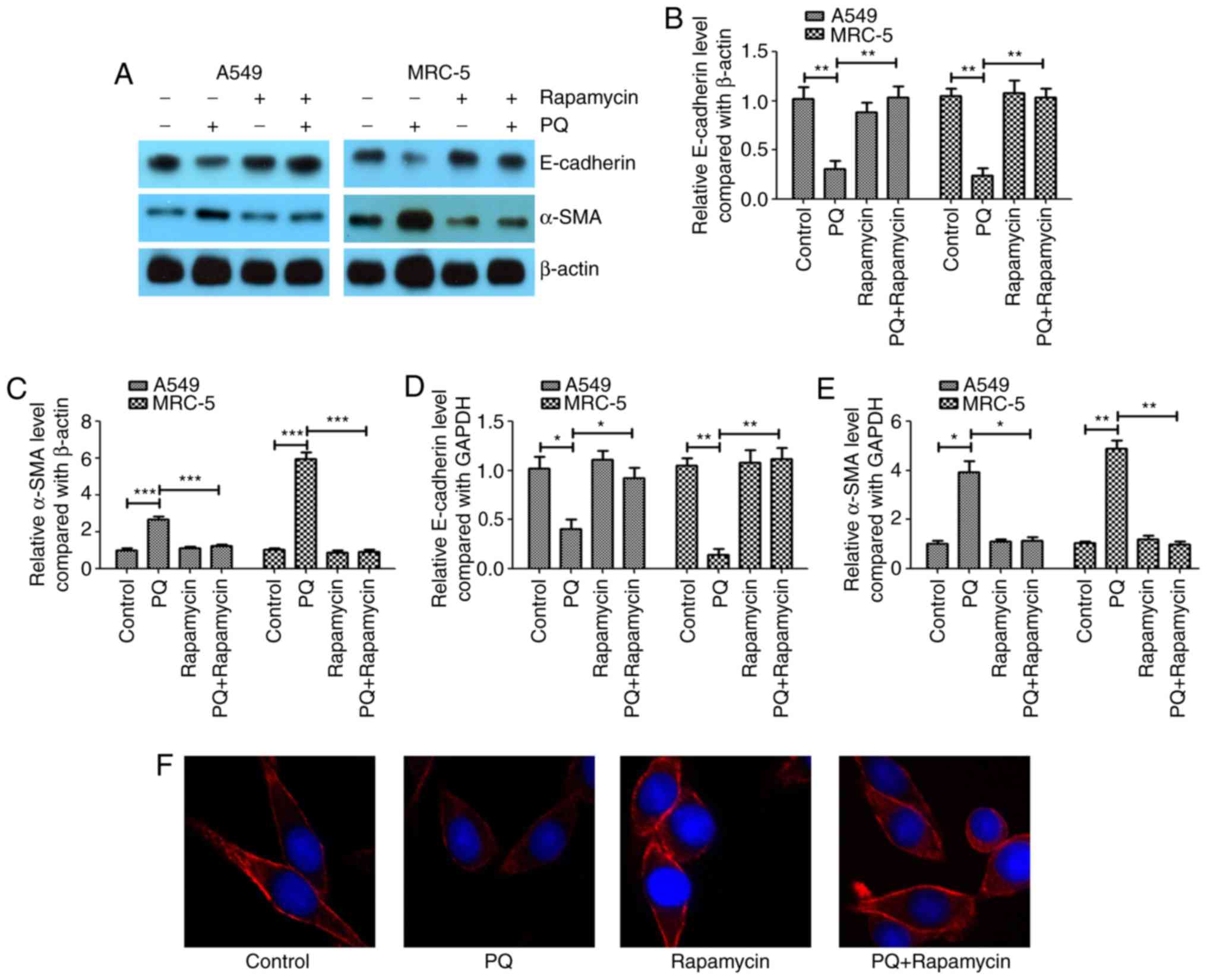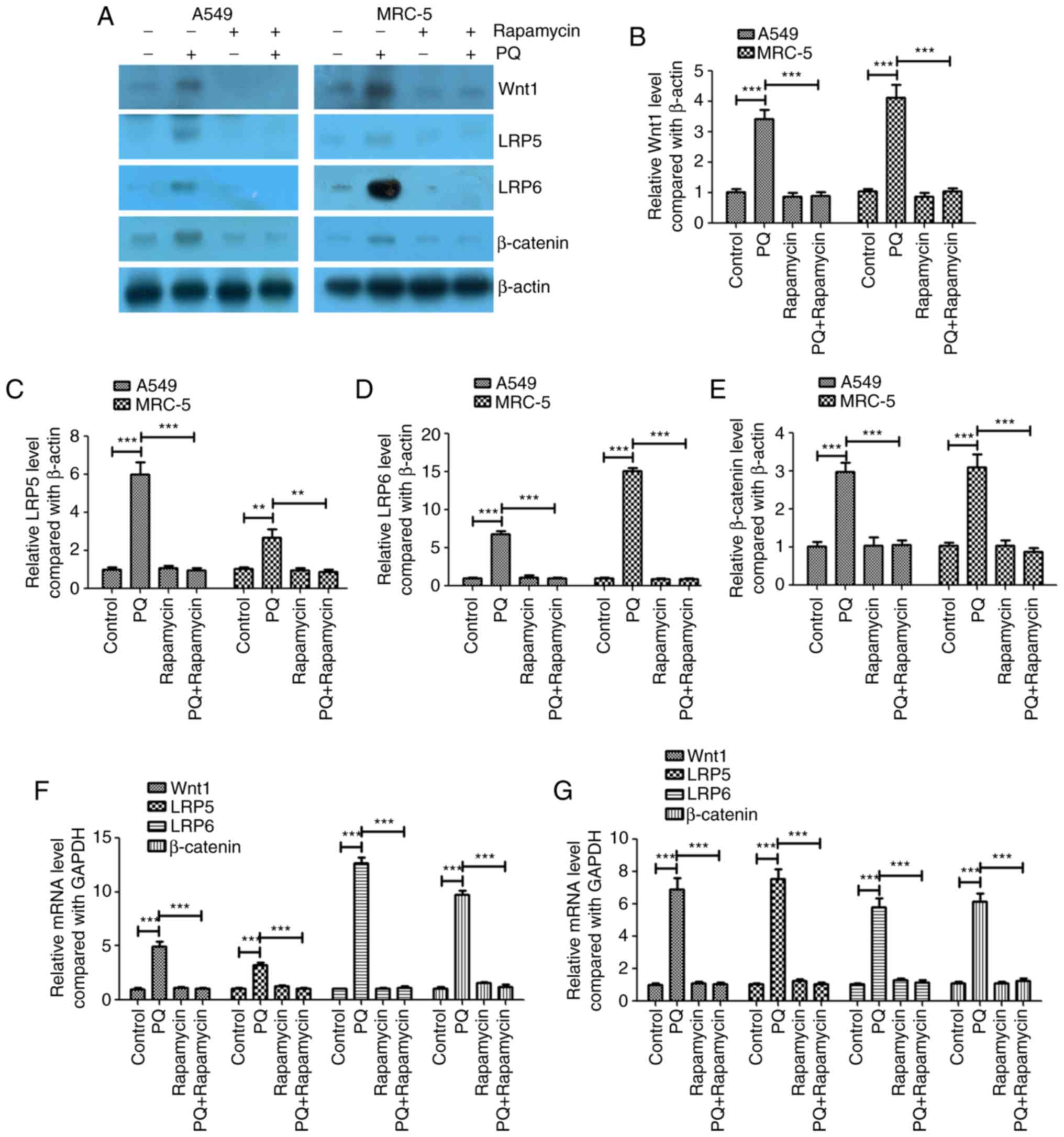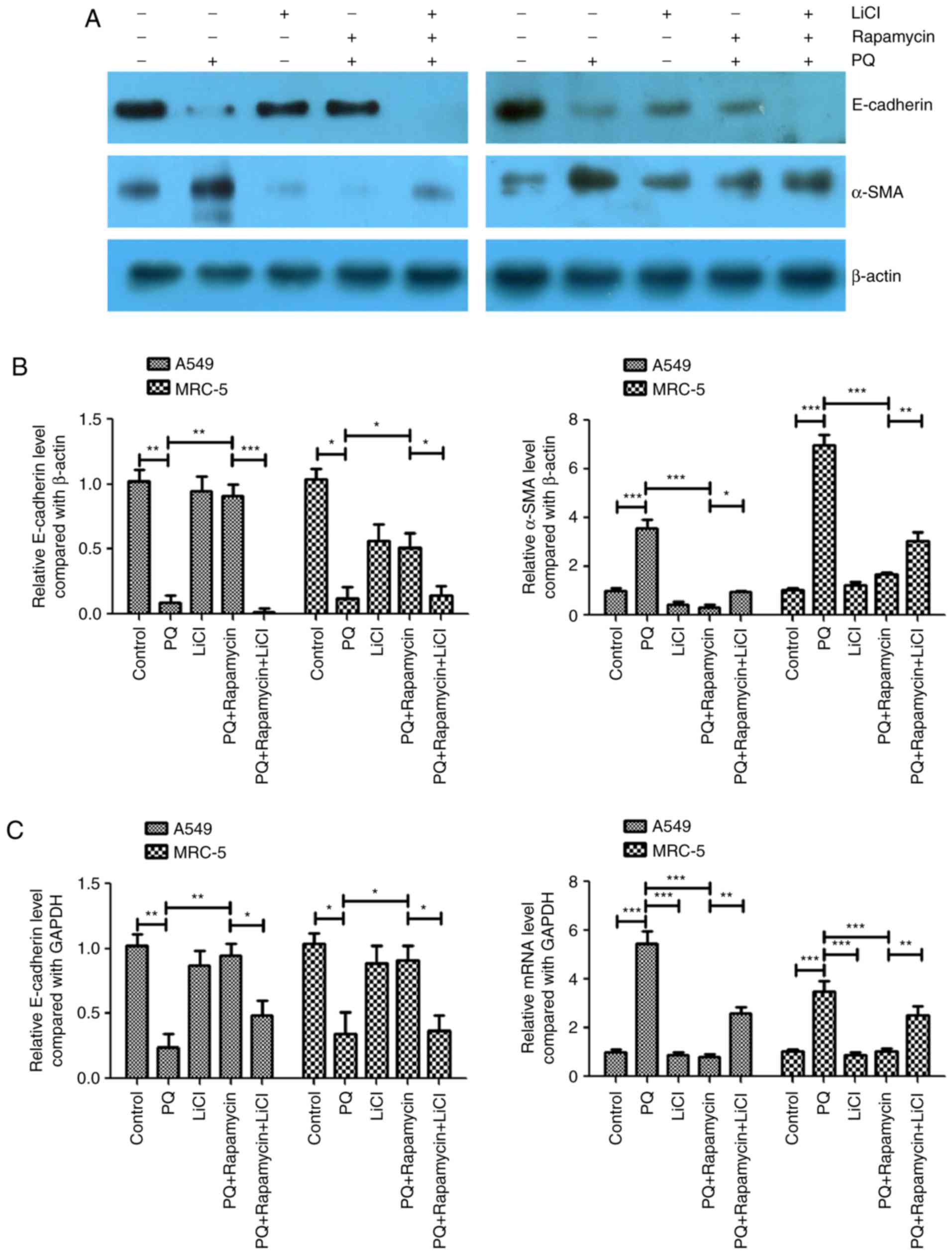|
1
|
Weng CH, Chen HH, Hu CC, Huang WH, Hsu CW,
Fu JF, Lin WR, Wang IK and Yen TH: Predictors of acute kidney
injury after paraquat intoxication. Oncotarget. 8:51345–51354.
2017. View Article : Google Scholar : PubMed/NCBI
|
|
2
|
Sabzghabaee AM, Eizadi-Mood N, Montazeri
K, Yaraghi A and Golabi M: Fatality in paraquat poisoning.
Singapore Med J. 51:496–500. 2010.PubMed/NCBI
|
|
3
|
Li T, Yang X, Xin S, Cao Y and Wang N:
Paraquat poisoning induced pulmonary epithelial mesenchymal
transition through Notch1 pathway. Sci Rep. 7:9242017. View Article : Google Scholar : PubMed/NCBI
|
|
4
|
Suntres ZE: Role of antioxidants in
paraquat toxicity. Toxicology. 180:65–77. 2002. View Article : Google Scholar : PubMed/NCBI
|
|
5
|
Willis BC and Borok Z: TGF-beta-induced
EMT: Mechanisms and implications for fibrotic lung disease. Am J
Physiol Lung Cell Mol Physiol. 293:L525–L534. 2007. View Article : Google Scholar : PubMed/NCBI
|
|
6
|
Li H, Hao Y, Zhang H, Ying W, Li D, Ge Y,
Ying B, Cheng B, Lian Q and Jin S: Posttreatment with Protectin DX
ameliorates bleomycin-induced pulmonary fibrosis and lung
dysfunction in mice. Sci Rep. 7:467542017. View Article : Google Scholar : PubMed/NCBI
|
|
7
|
Livak KJ and Schmittgen TD: Analysis of
relative gene expression data using real-time quantitative PCR and
the 2(-Delta Delta C(T)) method. Methods. 25:402–408. 2001.
View Article : Google Scholar : PubMed/NCBI
|
|
8
|
Xia MY, Zhao XY, Huang QL, Sun HY, Sun C,
Yuan J, He C, Sun Y, Huang X, Kong W and Kong WJ: Activation of
Wnt/β-catenin signaling by lithium chloride attenuates
d-galactose-induced neurodegeneration in the auditory cortex of a
rat model of aging. FEBS Open Bio. 7:759–776. 2017. View Article : Google Scholar : PubMed/NCBI
|
|
9
|
Yang X, Tang S, Dai C, Li D, Zhang S, Deng
S, Zhou Y and Xiao X: Quinocetone induces mitochondrial apoptosis
in HepG2 cells through ROS-dependent promotion of VDAC1
oligomerization and suppression of Wnt1/β-catenin signaling
pathway. Food Chem Toxicol. 105:161–176. 2017. View Article : Google Scholar : PubMed/NCBI
|
|
10
|
Lucarini L, Durante M, Lanzi C, Pini A,
Boccalini G, Calosi L, Moroni F, Masini E and Mannaioni G:
HYDAMTIQ, a selective PARP-1 inhibitor, improves bleomycin-induced
lung fibrosis by dampening the TGF-β/SMAD signalling pathway. J
Cell Mol Med. 21:324–335. 2017. View Article : Google Scholar : PubMed/NCBI
|
|
11
|
Wuyts WA, Agostini C, Antoniou KM, Bouros
D, Chambers RC, Cottin V, Egan JJ, Lambrecht BN, Lories R, Parfrey
H, et al: The pathogenesis of pulmonary fibrosis: A moving target.
Eur Respir J. 41:1207–1218. 2013. View Article : Google Scholar : PubMed/NCBI
|
|
12
|
Borensztajn K, Crestani B and Kolb M:
Idiopathic pulmonary fibrosis: From epithelial injury to
biomarkers-insights from the bench side. Respiration. 86:441–452.
2013. View Article : Google Scholar : PubMed/NCBI
|
|
13
|
Kim KK, Kugler MC, Wolters PJ, Robillard
L, Galvez MG, Brumwell AN, Sheppard D and Chapman HA: Alveolar
epithelial cell mesenchymal transition develops in vivo during
pulmonary fibrosis and is regulated by the extracellular matrix.
Proc Natl Acad Sci USA. 103:pp. 13180–13185. 2006; View Article : Google Scholar : PubMed/NCBI
|
|
14
|
Yamada A, Aki T, Unuma K, Funakoshi T and
Uemura K: Paraquat induces epithelial-mesenchymal transition-like
cellular response resulting in fibrogenesis and the prevention of
apoptosis in human pulmonary epithelial cells. PLoS One.
10:e01201922015. View Article : Google Scholar : PubMed/NCBI
|
|
15
|
Han YY, Shen P and Chang WX: Involvement
of epithelial-to-mesenchymal transition and associated transforming
growth factor-β/Smad signaling in paraquat-induced pulmonary
fibrosis. Mol Med Rep. 12:7979–7984. 2015. View Article : Google Scholar : PubMed/NCBI
|
|
16
|
Xie L, Zhou D, Xiong J, You J, Zeng Y and
Peng L: Paraquat induce pulmonary epithelial-mesenchymal transition
through transforming growth factor-β1-dependent mechanism. Exp
Toxicol Pathol. 68:69–76. 2016. View Article : Google Scholar : PubMed/NCBI
|
|
17
|
Wang J, Zhu Y, Tan J, Meng X, Xie H and
Wang R: Lysyl oxidase promotes epithelial-to-mesenchymal transition
during paraquat-induced pulmonary fibrosis. Mol Biosyst.
12:499–507. 2016. View Article : Google Scholar : PubMed/NCBI
|
|
18
|
Zhu Y, Tan J, Xie H, Wang J, Meng X and
Wang R: HIF-1α regulates EMT via the Snail and β-catenin pathways
in paraquat poisoning-induced early pulmonary fibrosis. J Cell Mol
Med. 20:688–697. 2016. View Article : Google Scholar : PubMed/NCBI
|
|
19
|
Yang W, Zhao X, Liang R and Chen D:
Effects of small RNA interference targeting mammalian target of
rapamycin on paraquat-induced pulmonary fibrosis in rats. Zhonghua
Wei Zhong Bing Ji Jiu Yi Xue. 29:830–835. 2017.(In Chinese).
PubMed/NCBI
|
|
20
|
Chen LM, Song TJ, Xiao JH, Huang ZH, Li Y
and Lin TY: Tripchlorolide induces autophagy in lung cancer cells
by inhibiting the PI3K/AKT/mTOR pathway and improves cisplatin
sensitivity in A549/DDP cells. Oncotarget. 8:63911–63922.
2017.PubMed/NCBI
|
|
21
|
Song Y, Zhang P, Sun Y, Li X, Chen L, Xiao
Y and Xing Y: AMPK activation-dependent autophagy compromises
oleanolic acid-induced cytotoxicity in human bladder cancer cells.
Oncotarget. 8:67942–67954. 2017.PubMed/NCBI
|
|
22
|
Chung EJ, Sowers A, Thetford A,
McKay-Corkum G, Chung SI, Mitchell JB and Citrin DE: Mammalian
target of rapamycin inhibition with rapamycin mitigates
radiation-induced pulmonary fibrosis in a murine model. Int J
Radiat Oncol Biol Phys. 96:857–866. 2016. View Article : Google Scholar : PubMed/NCBI
|
|
23
|
Mercer PF, Woodcock HV, Eley JD, Platé M,
Sulikowski MG, Durrenberger PF, Franklin L, Nanthakumar CB, Man Y,
Genovese F, et al: Exploration of a potent PI3 kinase/mTOR
inhibitor as a novel anti-fibrotic agent in IPF. Thorax.
71:701–711. 2016. View Article : Google Scholar : PubMed/NCBI
|
|
24
|
Xu X, Dai H, Geng J, Wan X, Huang X, Li F,
Jiang D and Wang C: Rapamycin increases CCN2 expression of lung
fibroblasts via phosphoinositide 3-kinase. Lab Invest. 95:846–859.
2015. View Article : Google Scholar : PubMed/NCBI
|
|
25
|
Xu Y, Tai W, Qu X, Wu W, Li Z, Deng S,
Vongphouttha C and Dong Z: Rapamycin protects against
paraquat-induced pulmonary fibrosis: Activation of Nrf2 signaling
pathway. Biochem Biophys Res Commun. 490:535–540. 2017. View Article : Google Scholar : PubMed/NCBI
|
|
26
|
Pozharskaya V, Torres-Gonzalez E, Rojas M,
Gal A, Amin M, Dollard S, Roman J, Stecenko AA and Mora AL: Twist:
A regulator of epithelial-mesenchymal transition in lung fibrosis.
PLoS One. 4:e75592009. View Article : Google Scholar : PubMed/NCBI
|












